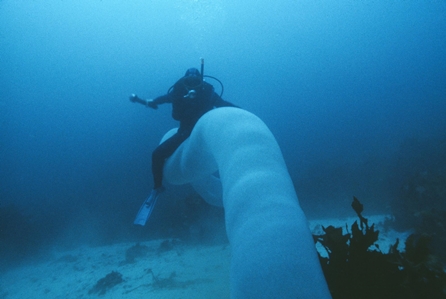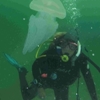General Description
Usually seen as a colony of smaller individuals (zooids) that is very long and shaped like a hollow cylinder, with a wide opening at one end, tapering to a narrower tip at the other. Bright pink to bright red. The outer surface is covered with pyramid-like spines. Colony walls about 2 cm thick. Colony up to 20 m in length and 1.5 m in diameter.
Biology
This species is likely to be the one photographed in 1966, in water 55 m deep, and nick-named "Marvin the marine monster". Colonies of these salps are made up by many small individuals called zooids, which each pump water from the outside to the inside of the hollow colony. This pumping forms water jets that move the colony.
Habitat
Ocean, near surface to depth of 26 m.
Open water
Distribution guide
Worldwide.
Species Group
Jellyfishes and allies › Salps
Depth
Water Column
Max Size
20 m
Diet
Plankton or Particles
Harmful
Not known to be dangerous to humans.
Commercial Species
No
Global Dispersal
Recorded in Australia
Identify
Conservation Status
- DSE Advisory List : Not listed
- EPBC Act 1999 : Not listed
- IUCN Red List : Not listed




